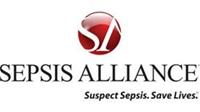Only 52% of EMS Practitioners Report a Very High Level of Confidence in Recognizing Sepsis – the Third Leading Cause of Death in the United States
Sepsis Alliance and NAEMT survey finds that increased sepsis education is urgently needed for EMS personnel.

View Survey Results
San Diego, Calif, February 20, 2019 – Today, Sepsis Alliance and the National Association of Emergency Medical Technicians (NAEMT) released the results of their Sepsis and EMS survey. The survey results find that only 52% of the more than 1,300 EMS practitioners surveyed are very confident in their ability to recognize the signs and symptoms of sepsis – the body’s life-threatening response to infection. The surveys were conducted from January 17, 2019 to January 29, 2019.
Each year in the United States, 1.7 million people are diagnosed with sepsis and 270,000 of them die. EMS practitioners transport more than 50% of all sepsis cases to the hospital emergency department. Despite the prevalence of sepsis and their proximity to the condition, one in five EMS practitioners reported that their organization does not have a sepsis-specific protocol and about one in three reported that their organization is not well prepared to address a patient with sepsis.
“Prehospital sepsis care should be a priority for every EMS organization,” said Dr. Craig Manifold, Medical Director, NAEMT. “Through our partnership with Sepsis Alliance, NAEMT is committed to providing prehospital clinicians with the education to recognize and treat sepsis in the field.”
“These survey results highlight the vital need for increased sepsis education and awareness among first responders, their in-hospital counterparts, and the general public,” said Thomas Heymann, President and Executive Director, Sepsis Alliance.
Even when patients are showing signs of sepsis, 58% of respondents reported that not all hospitals initiate a sepsis protocol and 25% said that physicians don’t like to diagnose patients with it. This reluctance to diagnose and treat sepsis patients could cost lives. Mortality from sepsis increases by as much as 8% for every hour that treatment is delayed.
“Although sepsis alerts are being implemented more widely, these survey results make it evident that EMS professionals still need to advocate for their patients and say, ‘I suspect sepsis!’” said Rom Duckworth, award-winning EMS educator, career fire captain, and EMS coordinator with 30 years of experience. “First responders who are trained to recognize and treat sepsis in the field can save lives.”
Sepsis Alliance also provides a sepsis training module and education resources for first responders, which can be found on www.sepsis.org/sepsis-first-response/.